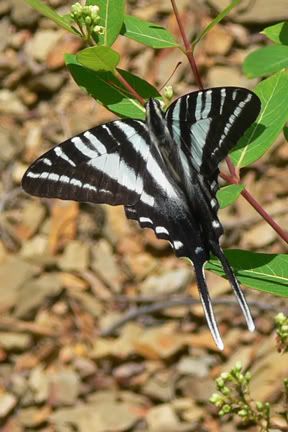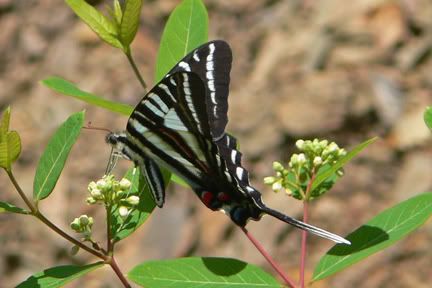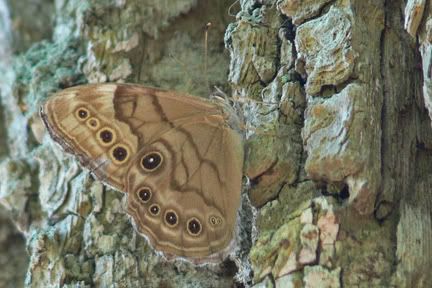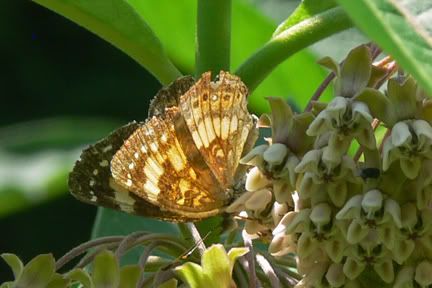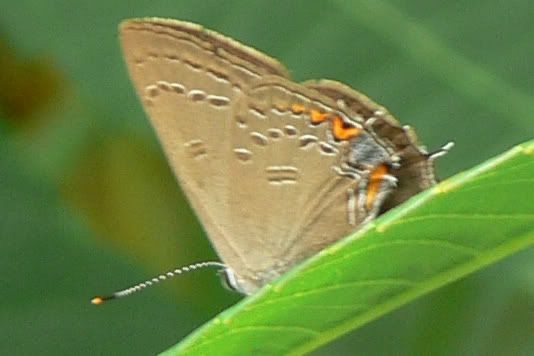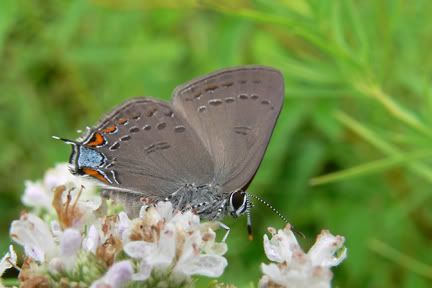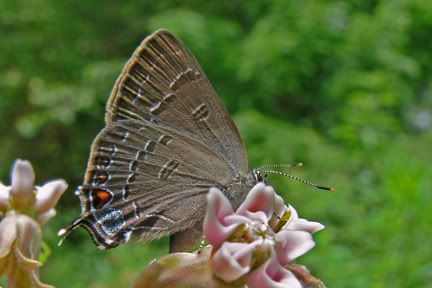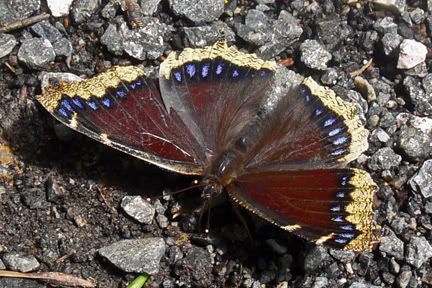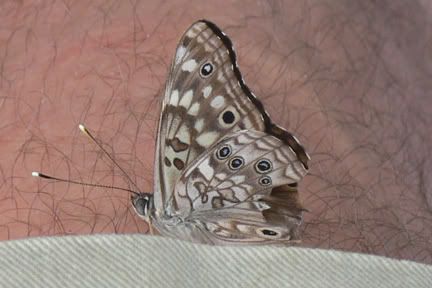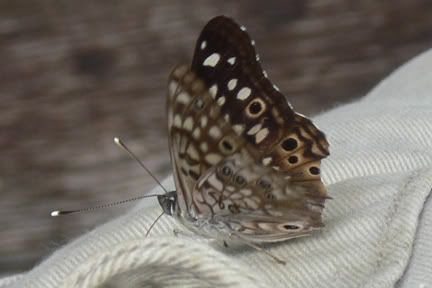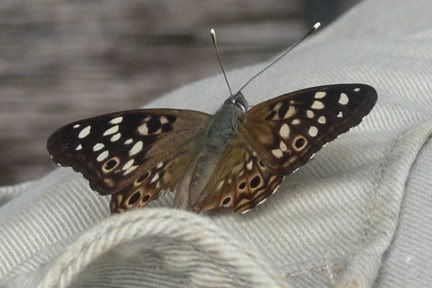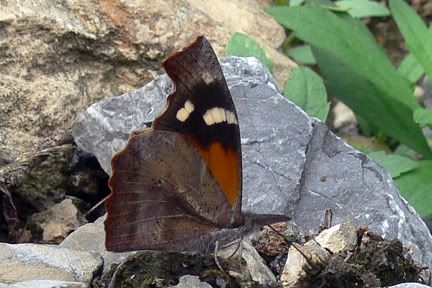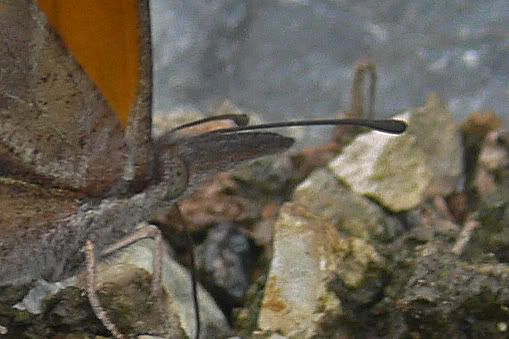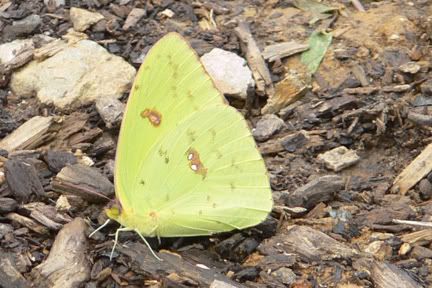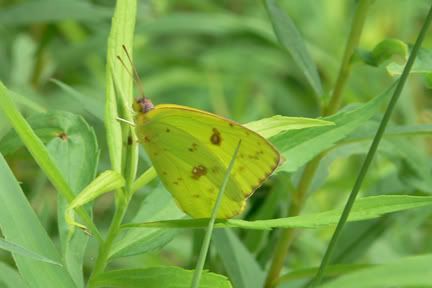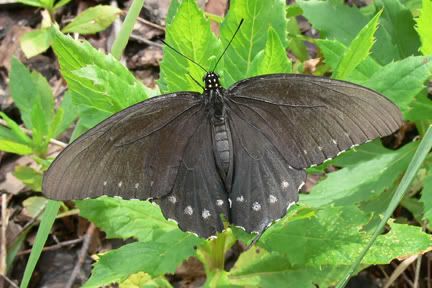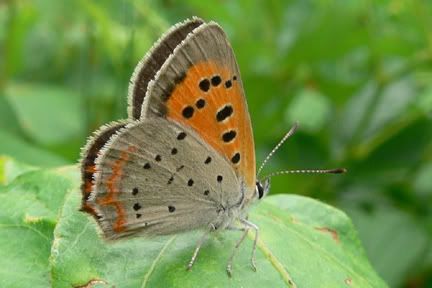Peck's Skipper is a somewhat common sight in Maryland, found mid-July every year. This individual was taken on July 18, 2008 at Brookside Gardens.
Shots below showing the class Peck's Skipper pattern. The lighter marks below can vary among individuals.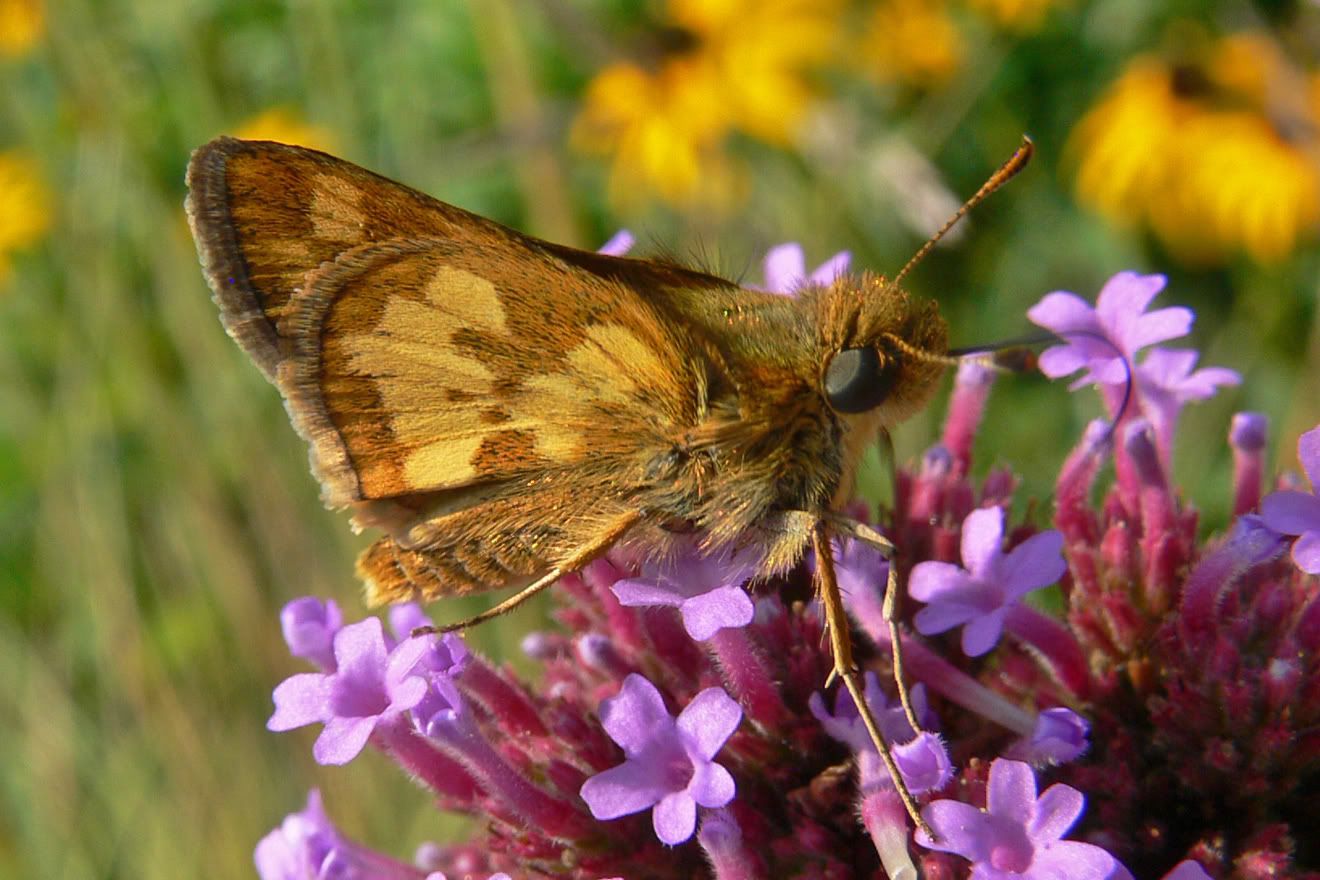
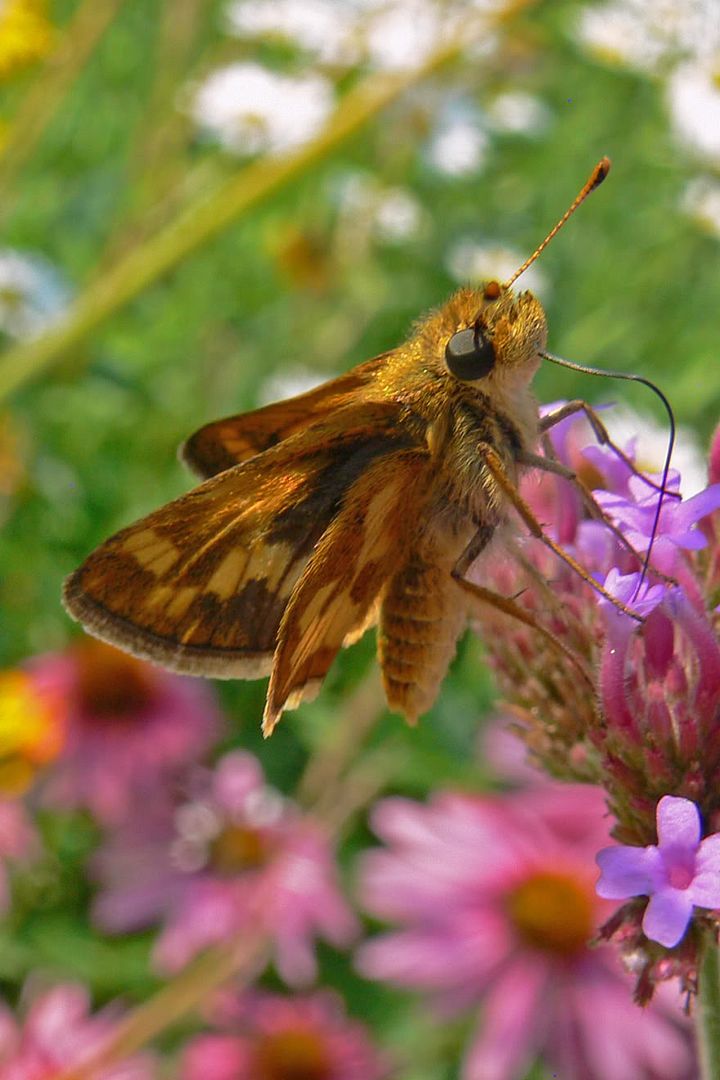
Above, the stigma is visible.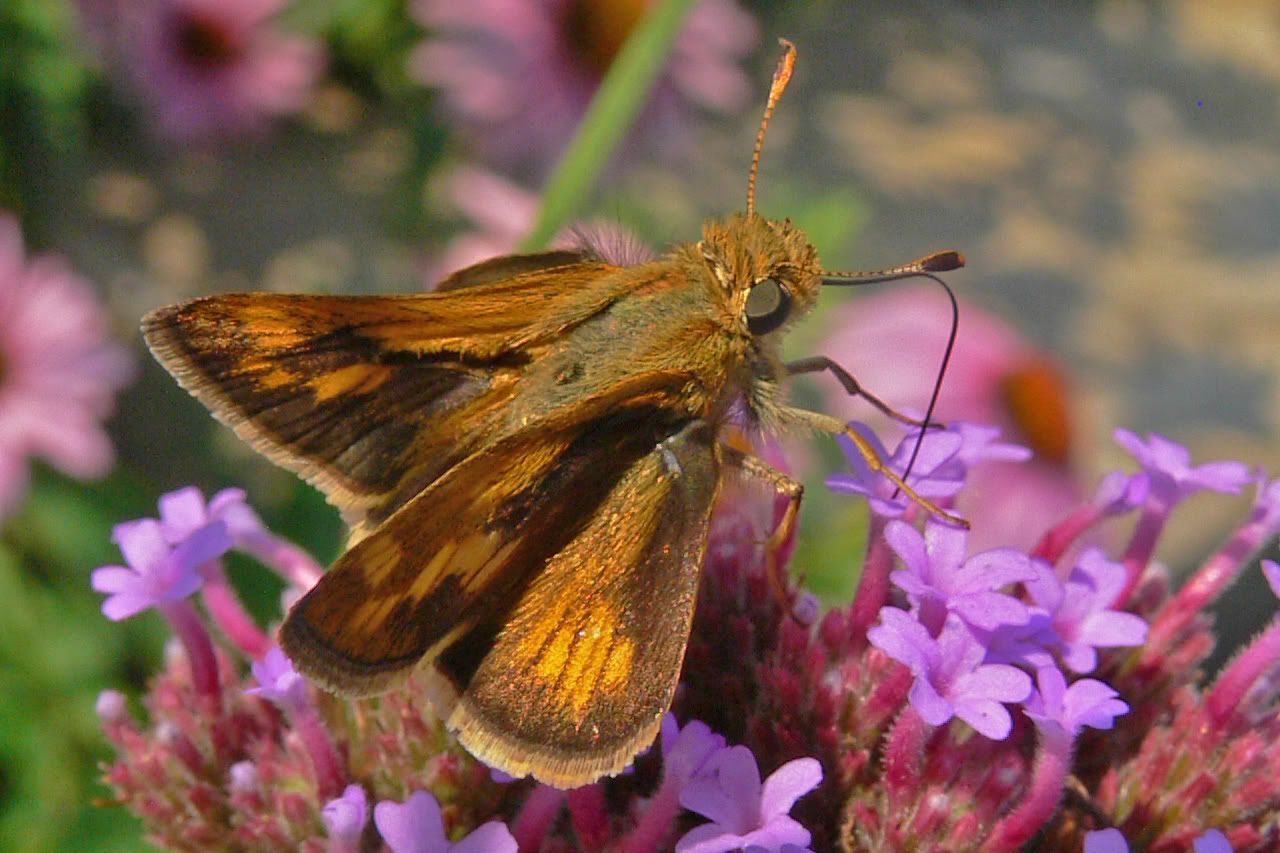
Several anatomical features can be seen here. The proboscis is double-barreled. The tip of the antenna is two-toned (orange above, darker brown below) and shows the hooked apiculus characteristic of (almost) all skippers. Additionally, the tibia on the legs have two spikes each.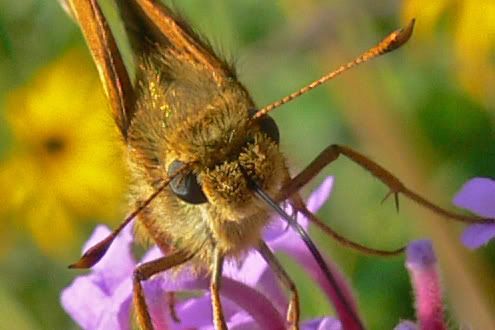
JRC
Read more...
Monday, July 28, 2008
Peck's Skipper Polites peckius
Posted by
Jeff Cagle
at
1:24 AM
0
comments
![]()
Labels: Butterflies
The Fiery Skipper Hylephila phyleus
The Fiery Skipper is a grass skipper common in the South, less so in Maryland. This particular individual was taken on July 18 at Brookside Gardens in Wheaton, MD.
The underside is distinctive, resembling few other grass skippers (compare to The Whirlabout)
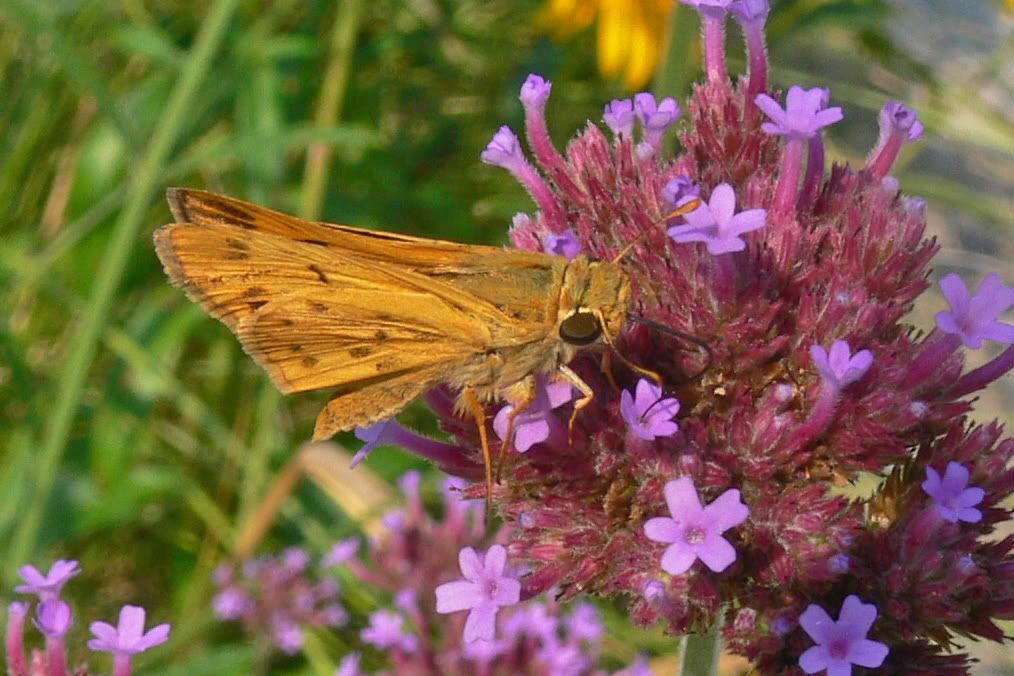
Above, the orange color intrudes into the marginal brown bands on both the fore- and hindwing, resembling tongues of flame (hence the name "Fiery Skipper"). The black stigma that runs from the base of the wing to the cell indicates that this is a male. It releases pheromones that help the female find a suitable mate.
The view of the genitalia confirms that this is a male -- note the claspers.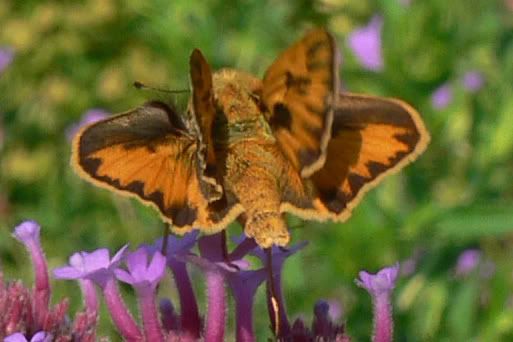
Don't the faces look friendly? The white circle around the eyes is noticeable here.
One more artistic shot.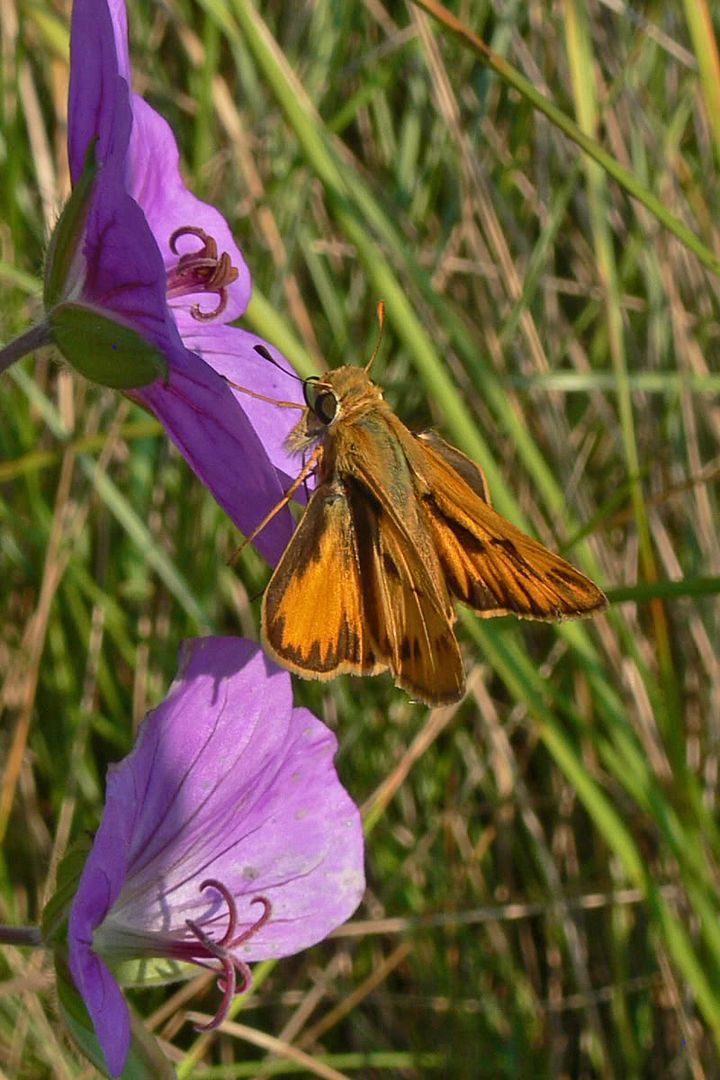
JRC
Read more...
Posted by
Jeff Cagle
at
12:21 AM
0
comments
![]()
Labels: Butterflies
Saturday, July 19, 2008
Allegany Co. Count 7/11/08
This was my first foray into Allegany County, home to the uncommon and beautiful Northern Metalmark. As with Carroll County, the numbers were low, but a couple of unusual butterflies were sighted.
Count Results (from Bob Ringler): Click for Count Results
Highlights
The show-stealer was the Northern Metalmark. These gorgeous creatures are two-toned. The dorsal side is dark brown with two thin metallic bands on margin and post-median. The ventral side is maple-colored with the same bands. The result is a butterfly that flashes two colors in flight. Flight, now, is rare with these. The Northern Metalmark is unquestionably the most sedentary butterfly I've seen. In fact, spotting them was a matter of looking for them on their choice nectar plants: Butterfly weed, a smallish species of sunflower, and goldenrod.
Northern Metalmark Calephelis borealis

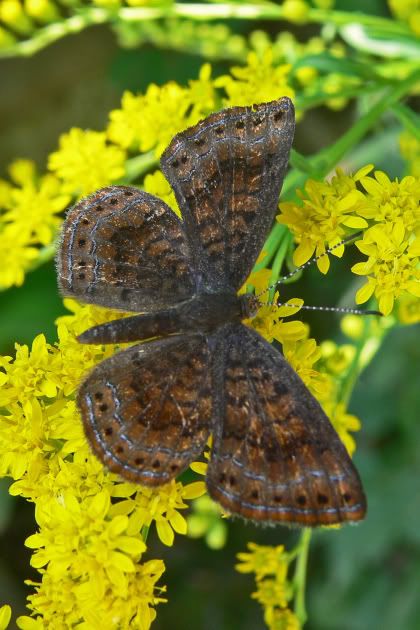
The eyes are a striking steel-gray. This flower resembles New Jersey Tea, but I don't know what it is.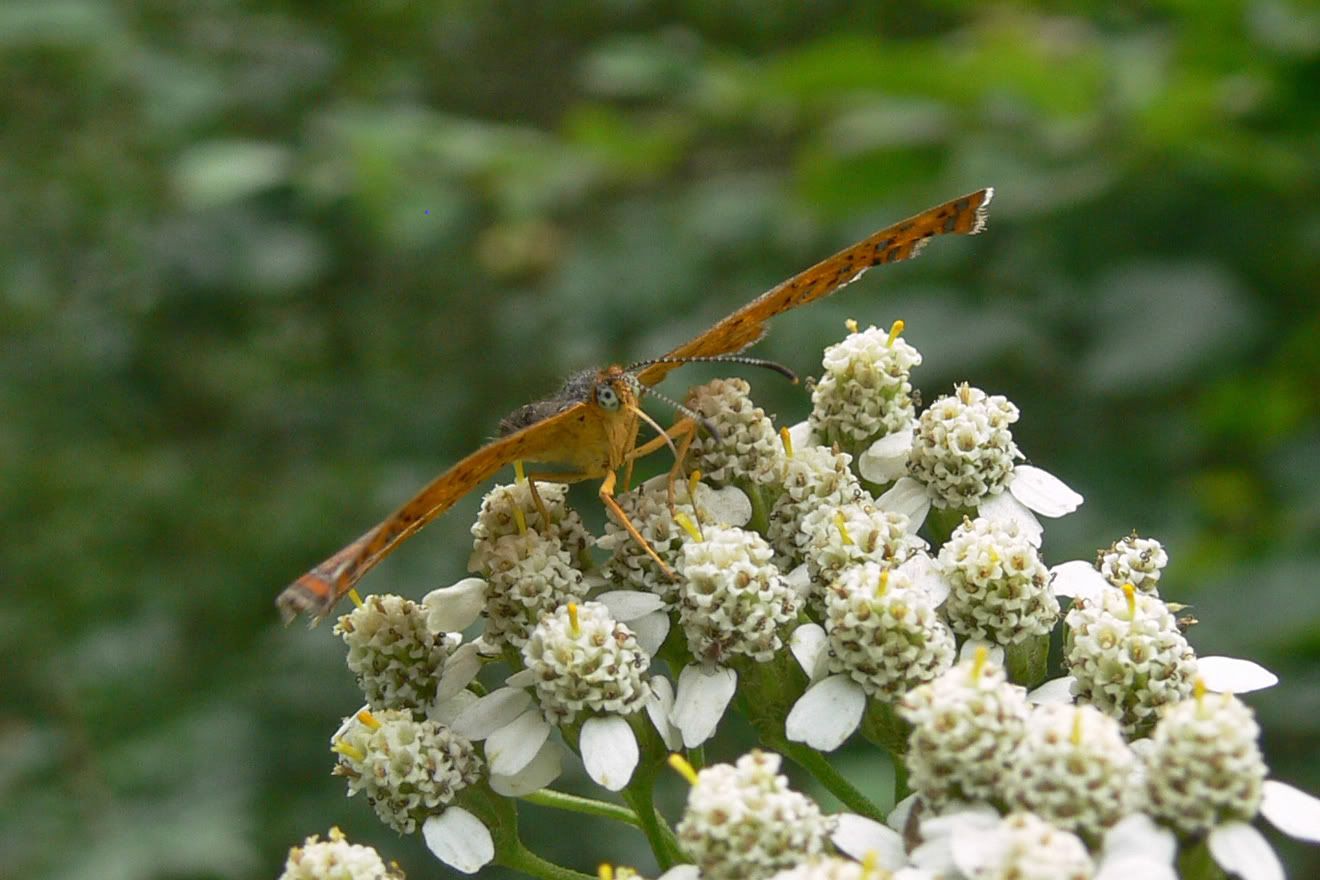
Below, the silvery bands are visible against the mapley-orange color.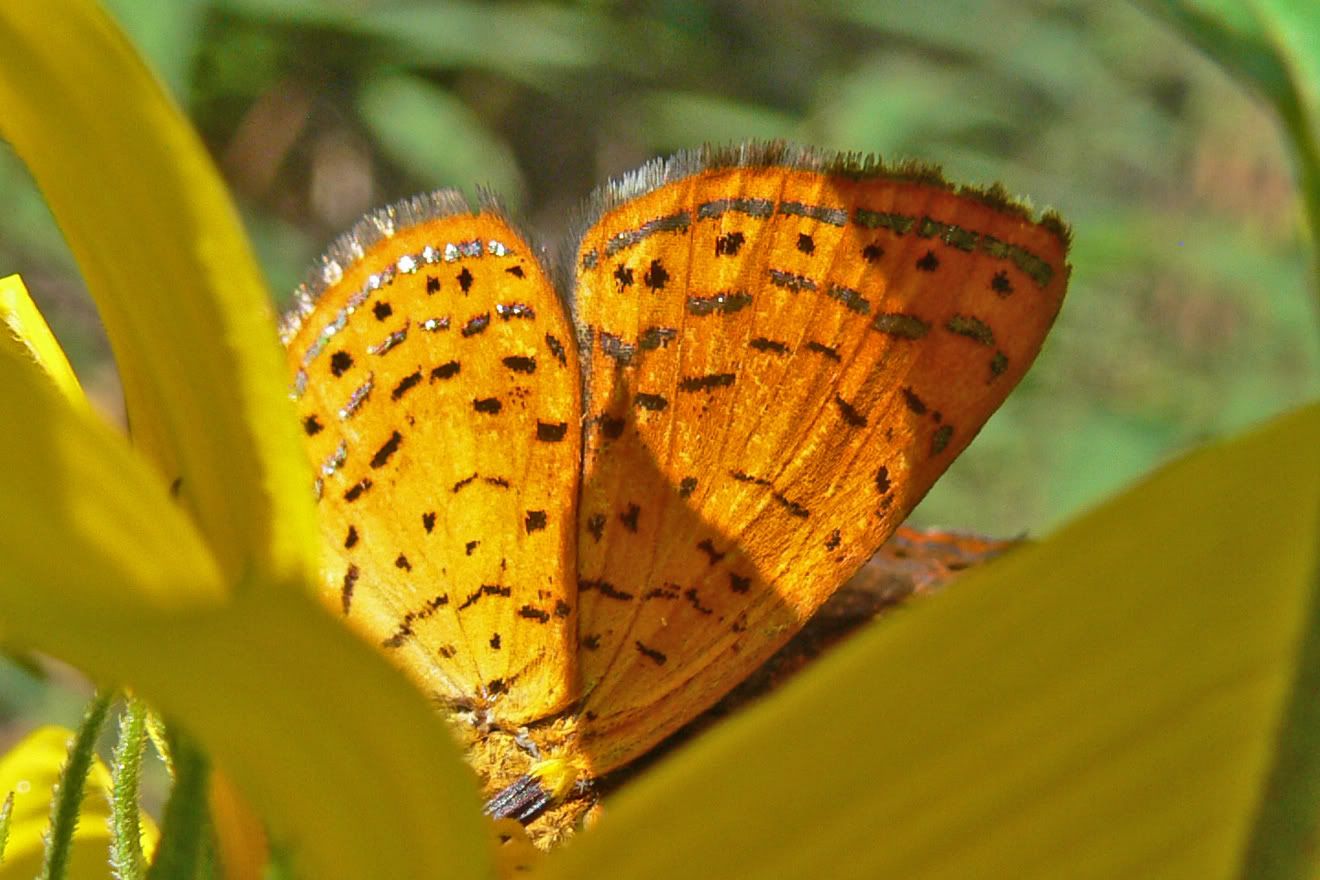
Another treat was the Aphrodite Fritillary. This butterfly differs from the Great Spangled only in the hindwing below: the Great-Spangled has a cream band in the post-margin that the Aphrodite lacks. The result is that the Aphrodite appears more starkly silvered than the Great Spangled.
Aphrodite Speyeria aphrodite
The Great Spangled is in the background. In the hindwing submargin, he has the cream-colored band, partially chewed on this side, that is lacking in the Aphrodite.
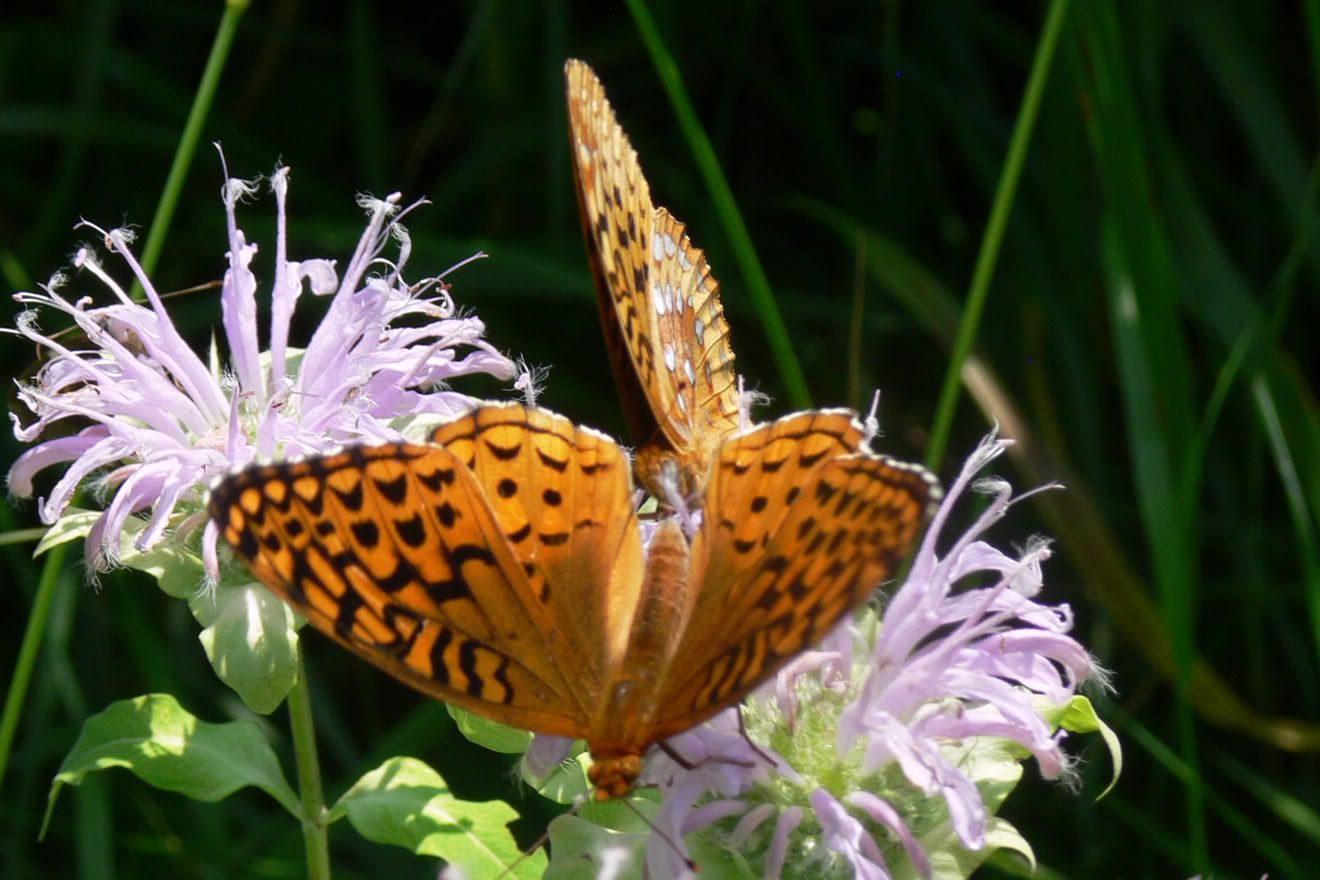
The lack of the cream hindwing band combined with the chocolate color of this individual (more typical of the female) brings out the silvery spots quite nicely.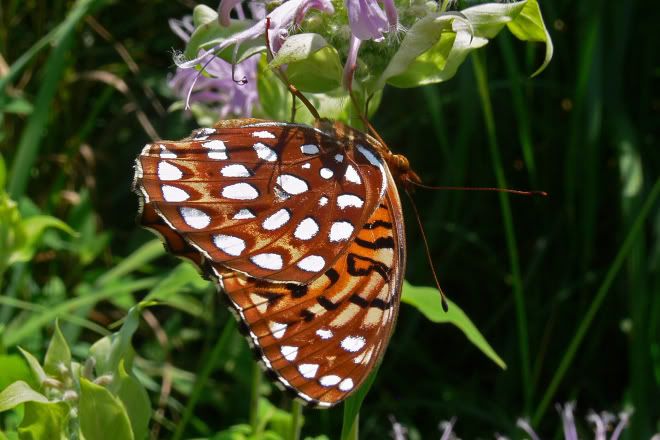
To our great delight, a Zebra Swallowtail popped out of nowhere and sampled the Dogbane long enough for a photo shoot.
A Northern Pearly Eye almost escaped detection against the bark of the tree here.
Roadside and Delaware Skippers joined the usual suspects (Silver-Spot, Dun, etc.) this year.
Roadside Skipper Amblyscirtes vialis on Birdsfoot Ticktrefoil
Delware Skipper Anatrytone logan below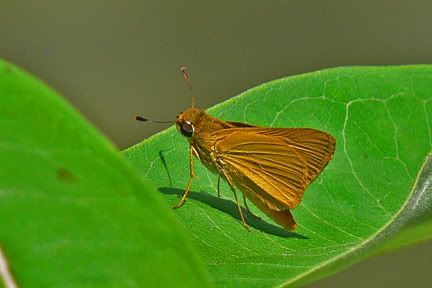
Delaware Skipper above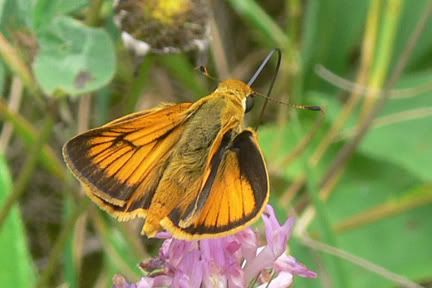
We had a lone tattered representative of the first brood of Silvery Checkerspots.
Other Shots
Little Glassywing Pompeius verna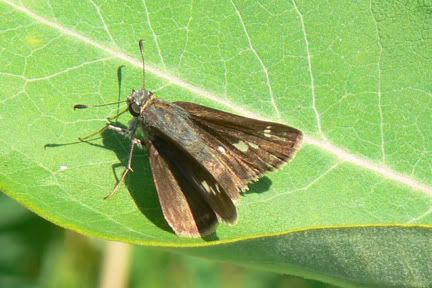
Pipevine Swallowtail Battus philenor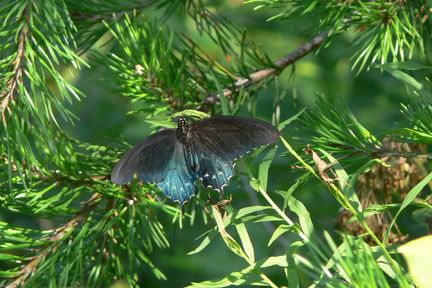
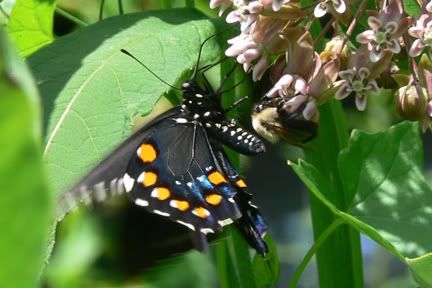
Banded Hairstreak Satyrium calanus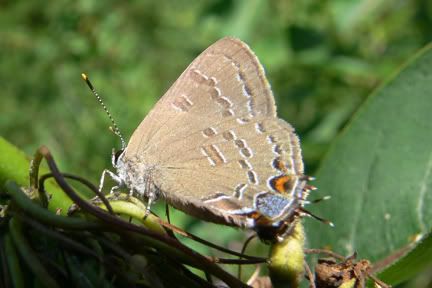
American Copper Lycaena phlaeus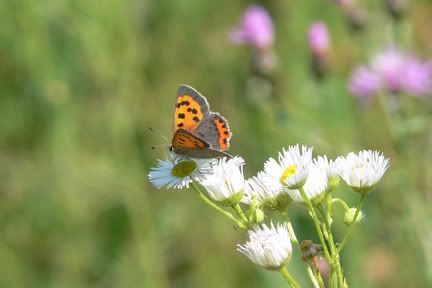
Buckeye Precis (Junonia) coenia. Surprisingly, not common in Allegany Co.!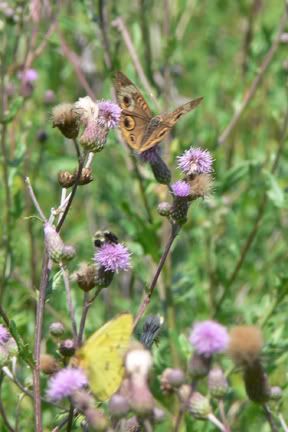
Northern Broken Dash Wallengrenia egeremet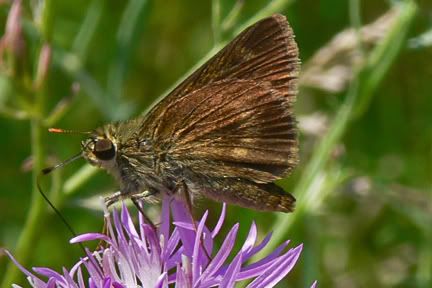
Monarda with 9 Silver-Spot Skippers (Epargyreus clarus) on it!
Grey Hairstreak Strymon melinus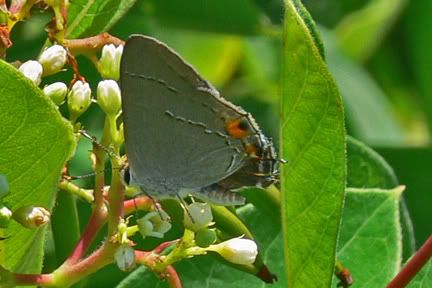
JRC
Read more...
Posted by
Jeff Cagle
at
9:02 PM
1 comments
![]()
Labels: Butterflies
Wednesday, July 16, 2008
Carroll County Count 07/05/2008
The Carrol County, MD Butterfly Count 2008 had low numbers but interesting diversity. The weather was rainy in the morning but mostly sunny by late day. Accordingly, we found more species as the day wore on. The greatest disappointment was that the traditional spot for Baltimore Checkerspots yielded none this year (under complete overcast and light drizzly conditions).
Click for count results, from Bob Ringler
Pipevine Swallowtail 1
Black Swallowtail 5
Tiger Swallowtail 3
Spicebush Swallowtail 6
Cabbage White 118
Clouded Sulfur 2
Orange Sulfur 70
Unidentified white sulfur 1
CLOUDLESS SULFUR 1
SLEEPY ORANGE 1
American Copper 4
Coral Hairstreak 14
EDWARDS' HAIRSTREAK 1
HICKORY HAIRSTREAK 1
Banded Hairstreak 2
Gray Hairstreak 2
Eastern Tailed Blue 118
Summer Azure 4
SNOUT 1
Great Spangled Fritillary 56
Pearl Crescent 62
Question Mark 2
Unidentified anglewing 2
Mourning Cloak 1
American Lady 1
Painted Lady 1
Red Admiral 3
Buckeye 2
Hackberry Emperor 4
Appalachian Brown 26
Little Wood Satyr 17
Wood Nymph 11
Monarch 5
Silver-spotted Skipper 20
Wild Indigo Duskywing 11
Least Skipper 3
Little Glassy Wing 19
Sachem 1
Mulberry Wing 4
Black Dash 5
Dun Skipper 7
Unidentified grass skipper 9
Highlights:
We found an Edward's Hairstreak for the third consecutive year on a power line cut-through off of Schalk Line Road 1
We found several Banded Hairstreaks
The real treat was discovering that one of our Banded Hairstreaks was more likely a Hickory Hairstreak.
Satyrium caryaevorum. Note the blue lunule on the hindwing that protrudes out past the surrounding orange lunules. Note also that the pairs of lines in the disc are aligned with each other (contrast the shots of the Banded Hairstreak above).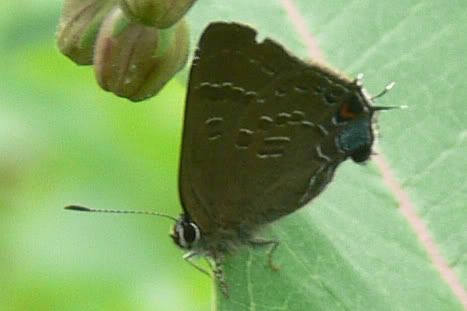
A Mourning Cloak jumped onto the path in front of us.
A Hackberry Emperor showed off his social skills.
On Little Pipe Creek we found a single Snout Butterfly, so named because of the unusual labia. Snouts are very cute.
In the same location, Bob noticed that one of my "Orange Sulfurs" was actually a Sleepy Orange.
Eurema nicippe
Unfortunately, he was unwilling to cooperate for photographs. We got just enough for an ID.
At Hashuwa Wildlife Management Area, we found a Cloudless Sulfur!
This appears to be the year of the Pipevine Swallowtail. We saw one on the count (unusual), several in Allegany County, and I even found one in my yard. Too bad my pipevine isn't mature enough for caterpillars.
More shots
Mulberry Wing Poanes m. massasoit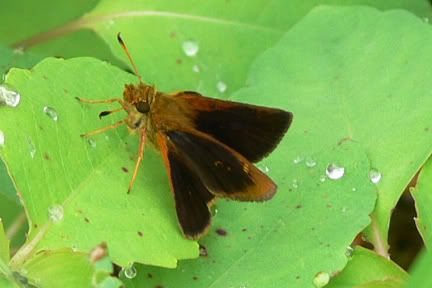
The markings below have merged into a single patch, which makes this part of the nominate subspecies. Harry Pavulaan is trying to establish the boundaries of the various subspecies; we appear to be on the southern end of the range for this one.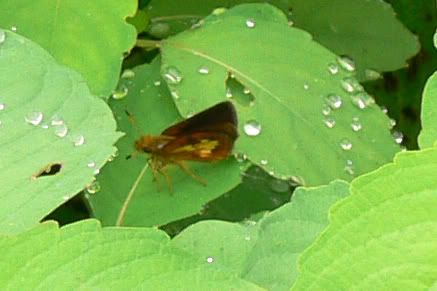
Buckeye Precis coenia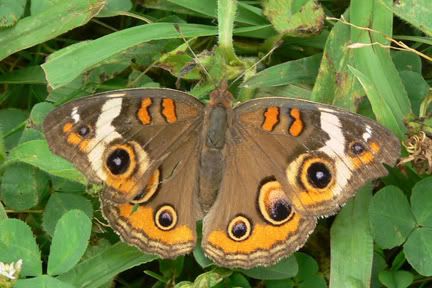
Painted Lady Vanessa cardui
Least Skipper Ancyloxypha numitor
Coral Hairstreaks Satyrium titus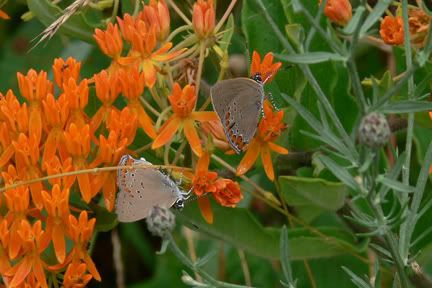
Common Wood Nymph Cercyonis pegala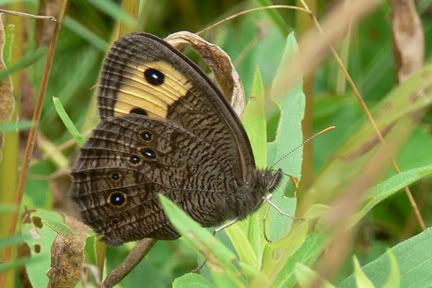
Appalachian Brown Satyrodes appalachia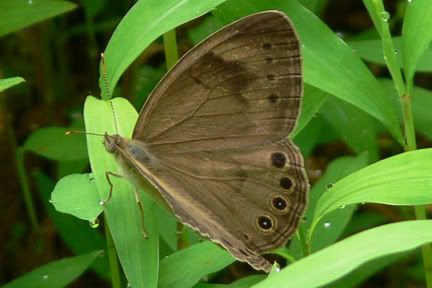
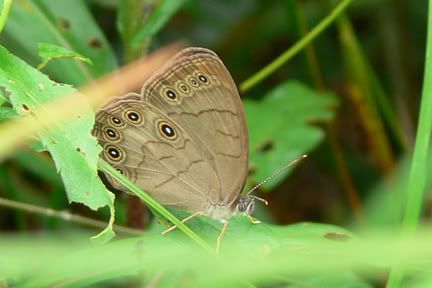
Little Glassy Wing female Pompeius verna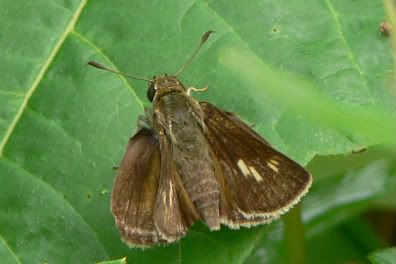
JRC
Read more...
Posted by
Jeff Cagle
at
3:16 PM
0
comments
![]()
Labels: Butterflies
